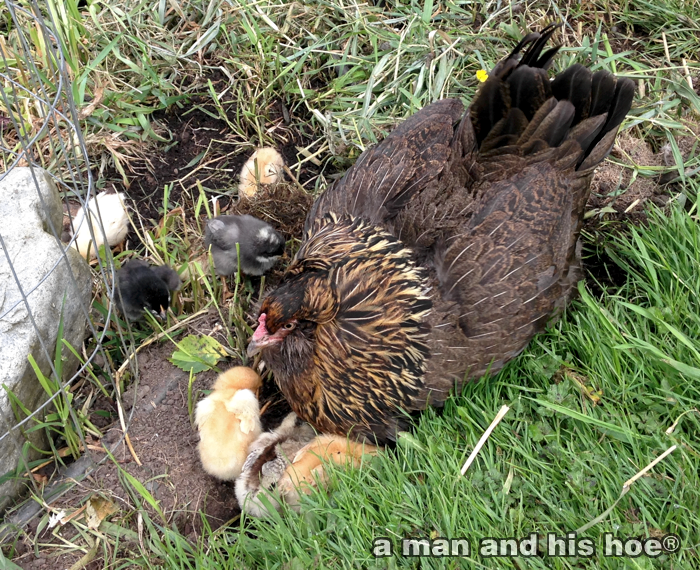Your cart is currently empty!
Month: June 2014
-
What Summer Looks-Tastes Like

This is what summer looks and tastes like at A Man and His Hoe®. The cherries are ripening early this year. Often, the birds finish off the cherries before we get a chance to enjoy them. This year, the birds are leaving them alone. Hurrah!
The raspberries are inside the hoop house, safe from the birds. They are most delicious picked in the afternoon when they are warm. Only a few make it into the house to be served.
It’s wonderful being able to eat these fruits directly off the vines and the trees. With most people living in dense urban settings, it’s a privilege to be able to walk out the door and enjoy them without having to go to a store to get them.
-
Summer Musings
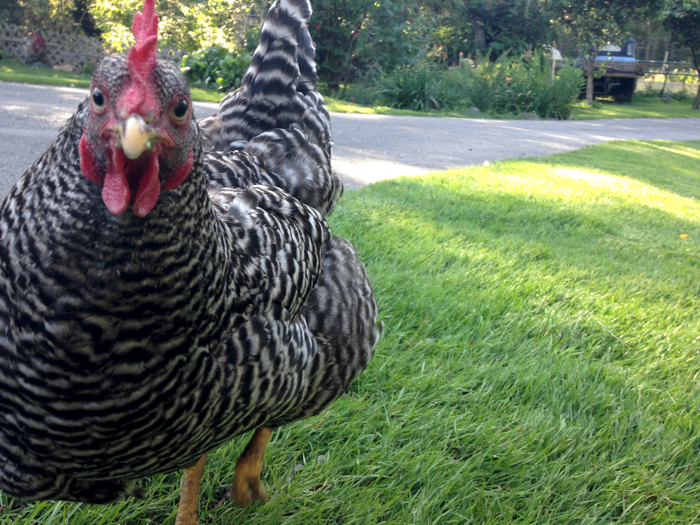
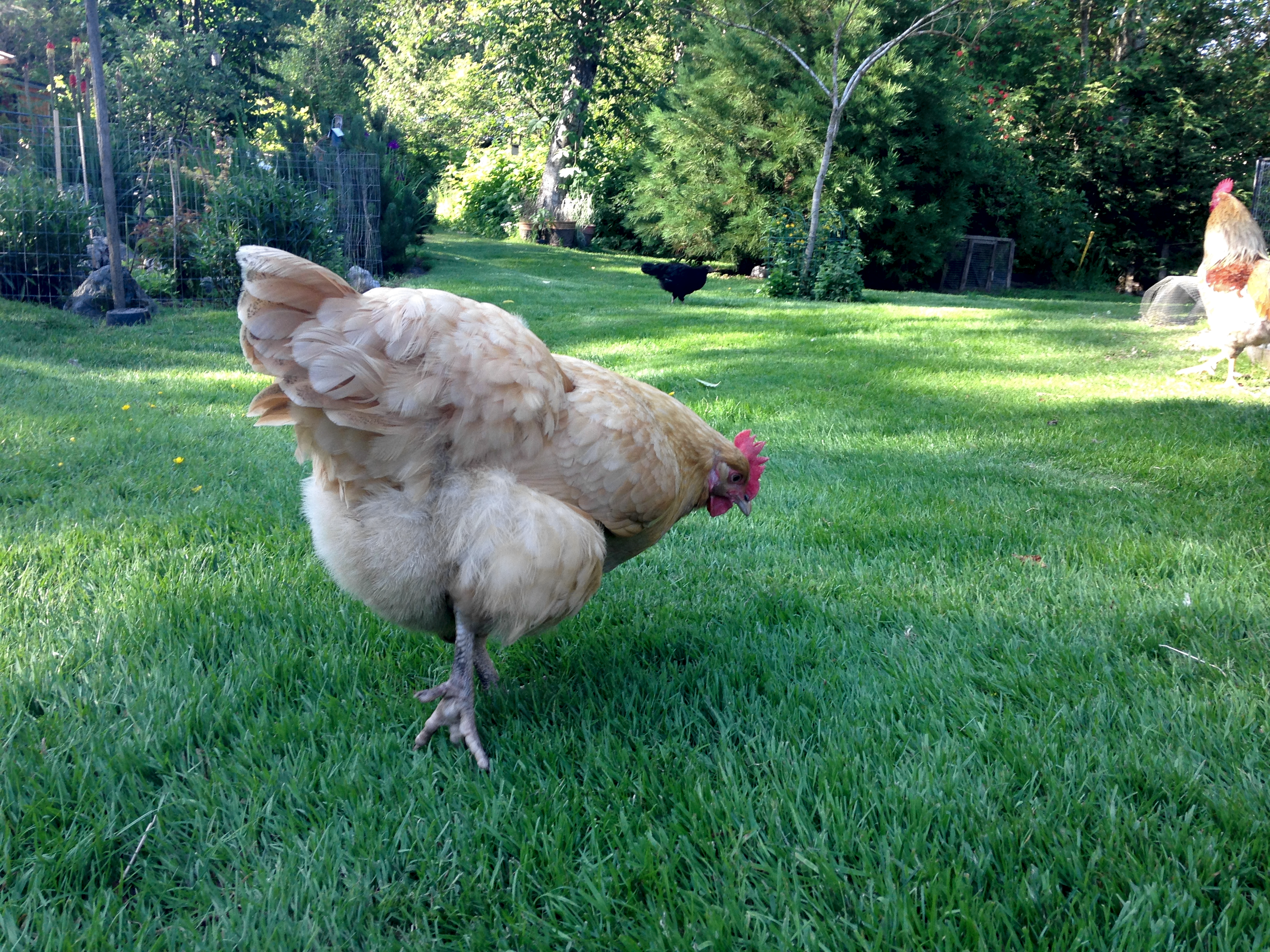
Every evening, many of the chickens end the day grazing on the grass next to the chicken yard. This time of year when the sun sets after 9 p.m. and dusk lingers until past 10 p.m., the chickens take their time getting to bed, especially the younger ones.
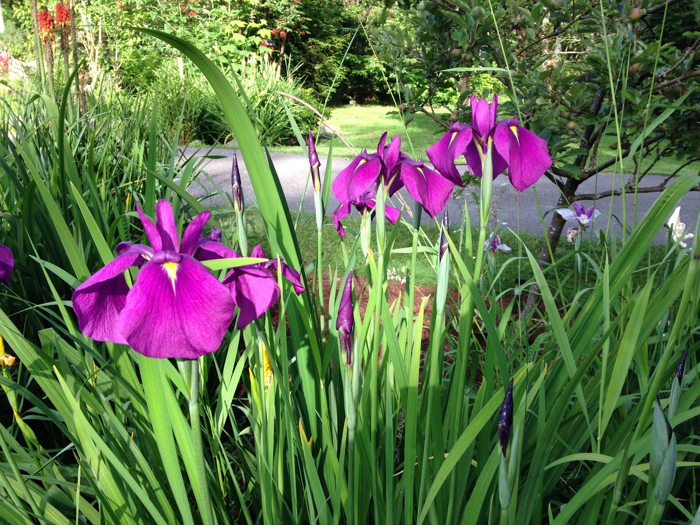
Morning colors this time of year are so soft yet brilliant. Getting up early is the thing to do this time of year.
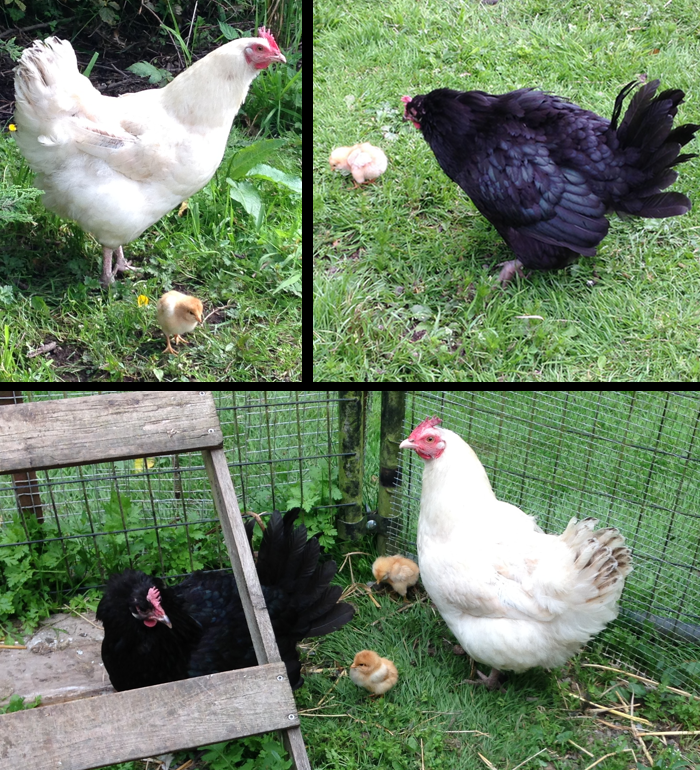
The two hens sharing the two chicks continue their shared co-parenting. At times, each one takes one of the chicks for some “quality time”. At other times they are side by side. It’s interesting observing them. Will this unusual child rearing make a difference for the chicks? Probably not, but time will tell.
See also:
-
More on the Interracial Lesbian Moms
The black and white hens which are raising the two chicks seem to be OK with the situation. The two chicks go back and forth between the two mothers. The two mothers haven’t gotten into any big fights. Sometimes if two mother hens get too close, they can get quite testy with each other. Mother hens can be fierce protectors of their chicks. I once had to rescue a chick which got trapped and the mother hen, thinking I was after the chick, attacked me ferociously. She came flying with her claws in front of her. I managed to rescue the chick without getting beaten to death by its mother, but barely.
In the pictures below, you can see one of the chicks go from the black mother to the white one. So far, they haven’t ventured too far from their sleeping spot. They’ve taken the chicks to a sequoia tree close to the chicken yard. It will be interesting to see what happens when they start taking the chicks a long ways from the chicken yard.

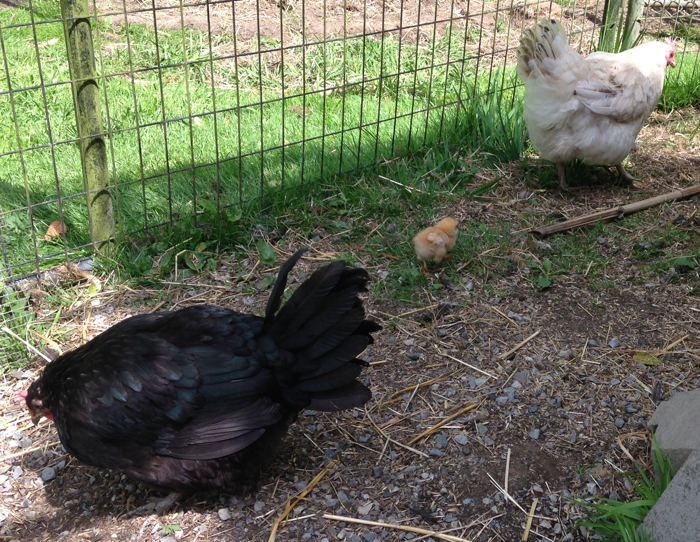
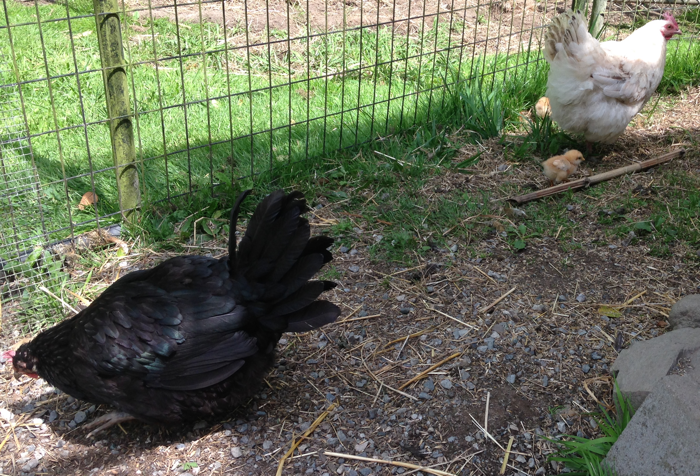
Since the two hens bed down side by side at night, they must be used to each other. Chickens mellow out in the evening. Roosters who fight each other during the day, will often roost next to each other at night. It’s as if all is forgiven once the sun goes down.
See also Interracial Lesbian Mothers and Two Mother Hens.
-
The Return of Sweet Annie

While weeding the garlic patch with BB, who was along for moral support, I spotted Sweet Annie (Artemisia annua) coming up between the garlic stems. If you are going to encourage any weeds, this is a weed to welcome. It will grow tall, six feet or more so be forewarned. The great thing about Sweet Annie is that the intricate leaves are as fragrant as the tiny flowers which appear toward the end of summer.
Let it go to seed in the fall, and next year, you will be guaranteed to have beds of tiny Sweet Annie seedlings. This is not an issue. It’s a delicate plant and you can easily weed it. The great thing is that while you are weeding the extra seedlings, you will be bathed in the most wonderfully scent imaginable. Just brushing against the plant will fill the air with sweet perfume.
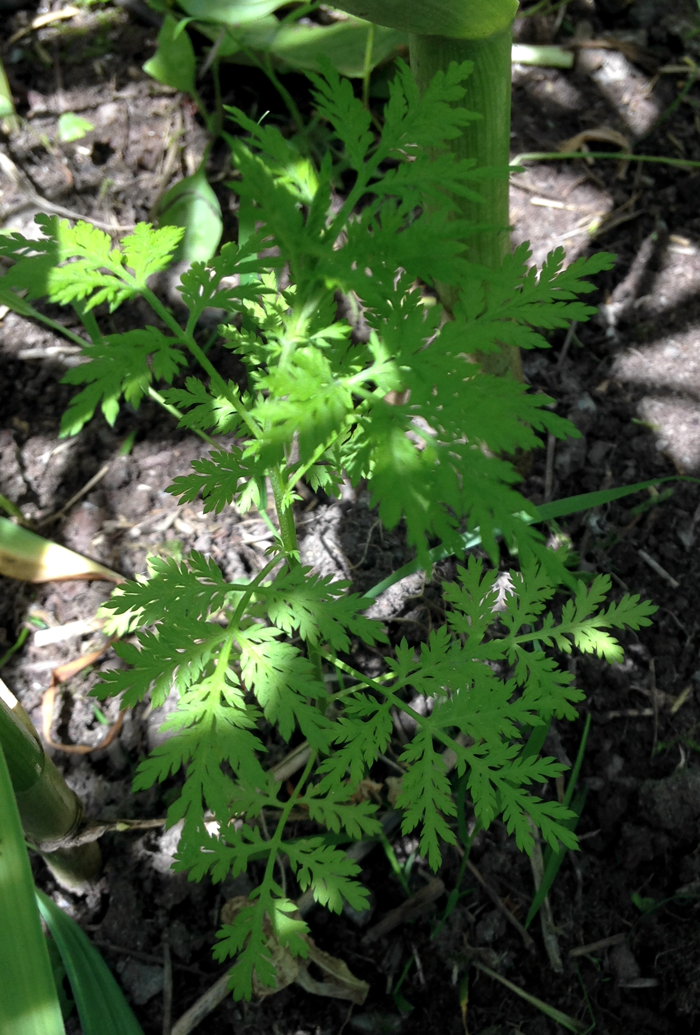
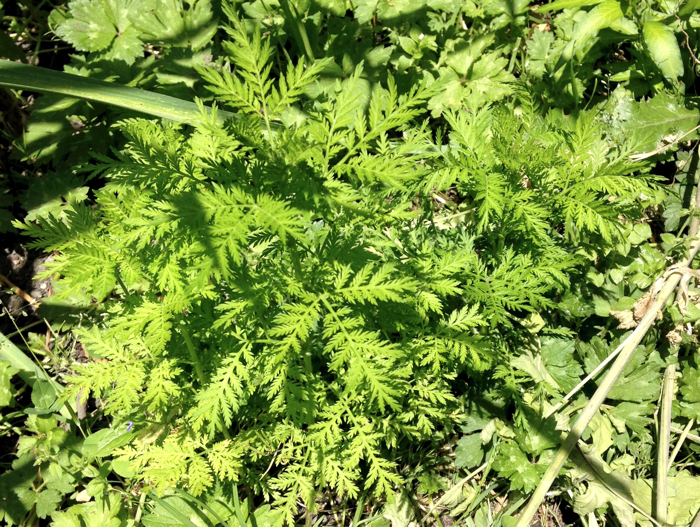
Saria Stevens who co-founded Chuckanut Transition in 2009, first introduced me to Sweet Annie. That was three years ago. Every year I look forward to spotting the first seedlings in my vegetable beds.
In late summer, early fall, I cut whole branches of the lacy leaves and hang them inside. Their fragrance lasts for months. It’s perfect to hang a dried branch in a closet.
- Artemisia annua ~ Wikipedia
- Sweet Annie: Uses, Side Effects, Interactions and Warnings ~ WebMD
- ARTEMISIA ANNUA (Sweet Annie) ~ Granny Earth
- Sweet Annie- Under-used plant in the Artemisia family ~ The Herb Cottage
- WHO Approves Artemisinin for Malaria in Africa ~ American Botanical Council
- Sweet Annie: How to Use? ~ Garden Web
-
The Importance of Digging
Niji-hime 虹姫 is showing her chicks the importance of digging. Her seven chicks watch her every move. They dart in and out between her leggs, snatching any worms or bugs she digs out of the ground. Chicks are born knowing how to scratch. They’ll do it even if they don’t have a mother to show them. But with a mother showing them and protecting them, they are much calmer and more confident.
